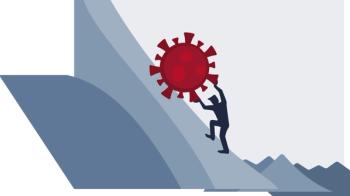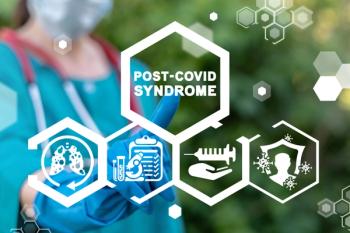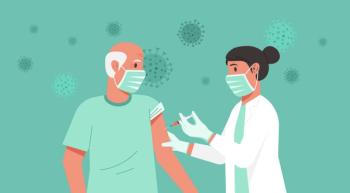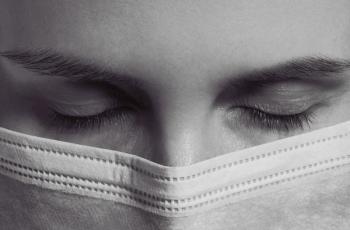
COVID-19 and Brain Injury
COVID-19 may lead to changes in personality and behavior, which require treatment across the continuum of care.
Traumatic brain injury, stroke, anoxic brain injury, encephalitis, and other neurological conditions leading to brain insult can be devastating to individuals and those close to them (
Clinicians today are increasingly recognizing the neurological consequences of COVID-19. The infection has been associated with various conditions, including cerebrovascular complications such as ischemic stroke, intracerebral hemorrhage, and microangiopathic thrombotic findings on autopsy.3 Para-infectious encephalopathy is also reported, including with psychosis, seizure, and even nonconvulsive status epilepticus as symptomatic manifestations.4 Less commonly reported have been posterior reversible leukoencephalopathy, necrotizing encephalopathy5, post-infectious and presumably autoimmune mediated encephalitis6, and acute disseminated encephalomyelitis.7 In addition, predictable consequences of the cardiopulmonary effects of COVID-19, including cardiac arrest and respiratory failure, can lead to anoxic brain injury. Common to all these neurological injuries is the possibility of behavioral manifestation and coincident need for specialized care.
Common behavior difficulties following brain injury include behavioral excesses such as irritability (eg, poor tolerance, short temper), aggression (eg, hitting, grabbing, kicking), property destruction (eg, striking furniture, throwing items), and inappropriate vocalizations (eg, cursing, yelling, threats) (
Some of the most problematical behaviors can be dangerous to the patients and others around them. Treating these dangerous and challenging behaviors (including physical aggression, self-injurious behavior, sexual disinhibition, escape, or elopement) require a treatment commitment across the continuum of care. Pharmacologic management of these behaviors alone is often unsuccessful. In many instances, medications can be either counterproductive, due to the sedative and cognitive impacts, or can unnecessarily expose patients to significant adverse effects. These approaches must therefore be used judiciously and target specific neurological symptoms that are not better addressed using the behavioral approach (eg, psychosis, epilepsy, pseudobulbar affect, depression, etc). In nearly all cases, pharmacologic management of behavior following brain injury should be accompanied by an appropriate, comprehensive behavior approach that is non-pharmacologic.
In the early, acute stages of recovery from brain injury many of the behavioral complications are considered a normal part of recovery.9 Clinicians familiar with the acute care and management of neurologic patients will be familiar with the agitation, disorientation, combative, and impulsive behavior that can occur during the initial hospitalization and other early rehabilitation courses. If these behaviors continue beyond the early phases and the individual forms negative patterns of interacting with others, then specialized interventions are required. While this pattern may be obvious in more severe brain injuries, altered behavior is also frequently displayed in subtle fashion for individuals with milder injuries and impairments. Nevertheless, these behavior changes can be incredibly disturbing to families and staff, disruptive to activities and therapy, and can jeopardize patient safety and successful recovery.8
Consider the subtle difference between individuals who can effectively tell a joke versus those who cannot; those who can read a room and adjust a social approach accordingly versus the opposite; those who make an appropriate amount of eye contact versus those who stare and appear disengaged, or someone who is assertive as opposed to demanding. The importance of these subtle changes cannot be overstated. They can mean the difference between being socially effective or awkward, funny or rude, disarmingly interesting or off-unsettlingly weird, and they all can be influenced by brain insult. The patient and family’s future quality of life, depends on effective interventions.
Interdisciplinary rehabilitation teams, often including behavior analysts (professionals in
Behavior analysts and therapists can provide direct observations of interactions, consider what may be motivating the difficult behaviors, and what patient responses may need to be strengthened and reinforced. Basic principles of applied behavior analysis, such as reinforcing positive and effective behavior patterns while not reinforcing ineffective and inappropriate behavior, are key to achieving a successful outcome.8 All involved parties must be consistent in their response to behaviors to efficiently promote prosocial behaviors. Many behavior difficulties result in the individual gaining attention, escaping or avoiding difficult tasks, or getting access to preferred materials. It is vital that the patient neither gains attention nor escapes responsibilities by demonstrating problem or disruptive behaviors. The treatment team must work to establish a good, working relationship with the patient, ignore “junk” behaviors, redirect the patient to positive behavior patterns, and reward good effort and compliant interacting.10 These points are valid in managing behavior in any context, but even more so in the context of neurological impairment.
A specialized and specific behavior intervention plan aims to establish the most effective and acceptable response patterns and framework. It helps the patient maintain positive, prosocial responses and learn more efficient functional skills. Skilled and trained professionals, such as behavior analysts, can guide this process. Therapists can provide training and best-practices regarding the intervention plan to all those who may interact with the patient, including, most importantly, the family. They will need to rely on these tools for the long term.
Programs should teach patients to pursue their needs in positive ways and how to make others understand them without resorting to problem behavior. Physicians can augment programs with judicious use of appropriate medications. They should manage specific neurological impairments, while avoiding the pitfalls previously mentioned: sedation and other adverse effects. It is also essential that data be collected, such as the frequency or context of a behavior, to help determine if the intervention plan is working or requires adjustment. The effects of brain injury and recovery are highly individual. The family and others on the treatment team must evaluate the responses, goals, and outcomes throughout recovery (eg, monitoring response to new medications, understanding of program expectations).
Considering risks to patients and families, the rising cost of health care, and the possibility of reduced services, clinicians should focus on structured, efficient, and effective interventions, such as the use of behavior analytic principles. Reliable interventions are essential to a well-integrated, interdisciplinary rehabilitation treatment plan. The quality of life for those affected by brain injury depends on having the opportunity to receive specialized, experienced, and effective treatment specifically designed to address the unique difficulties these patients face, including problem behaviors.
The significance of brain injury, including damage from the consequences of COVID-19, cannot be overstated. Whether it is the skills required to complete daily activities or behavior difficulties that limit social integration, the deficits must be addressed.
Mr Persel is the regional director of clinical services and director of behavior programming at Centre for Neuro Skills. Dr Ashley is chief medical officer at Center for Neuro Skills.
References
1. Centers for Disease Control and Prevention. Report to congress on traumatic brain injury in the United States: epidemiology and rehabilitation. Accessed October 7, 2020.
2. Beaulieu C, Wertheimer JC, Pickett L, et al. Behavior management on an acute brain injury unit: evaluating the effectiveness of an interdisciplinary training program. J Head Trauma Rehabil. 2008;23(5):304-11.
3. Hernández-Fernández F, Valencia HS, Barbella-Aponte RA, et al. Cerebrovascular disease in patients with COVID-19: neuroimaging, histological and clinical description. Brain. 2020:awaa239.
4. Ellul MA, Benjamin L, Singh B, et al. Neurological associations of COVID-19. Lancet Neurol. 2020;19(9):767-783.
5. Poyiadji N, Shahin G, Noujaim D, et al. COVID-19-associated acute hemorrhagic necrotizing encephalopathy: imaging features. Radiology. 2020;296(2):E119-E120.
6. Khoo A, McLoughlin B, Cheema S, et al. Postinfectious brainstem encephalitis associated with SARS-CoV-2. J Neurol Neurosurg Psychiatry. 2020;91(9):1013-1014.
7. Ellul MA, Benjamin L, Singh B, et al. Neurological associations of COVID-19. Lancet Neurol. 2020;19(9):767-783.
8. Persel CH, Persel CS. The use of applied behavior analysis in traumatic brain injury rehabilitation. In: Ashley M,Hovda D, eds. Traumatic Brain Injury: Rehabilitation, Treatment and Case Management. CRC Press, Taylor & Francis Group; 2018: 411-450.
9. Rao V, Rosenberg P, Bertrand M, et al. Aggression after traumatic brain injury: prevalence and correlates. J Neuropsychiatry Clin Neurosci. 2009;21(4):420-9.
10. Professional Crisis Management Association. BehaviorTools: Instructor Course. Professional Crisis Management Association, Sunrise, FL.
Additional resources and information
1. Heinicke MR, Carr, JE. Applied behavior analysis in acquired brain injury rehabilitation: a meta-analysis of single-case design intervention research. Behav. Intervent. 2014;29:77-105.
3. Traumatic Brain Injury Rehabilitation and Resources
Newsletter
Receive trusted psychiatric news, expert analysis, and clinical insights — subscribe today to support your practice and your patients.

















